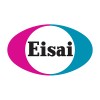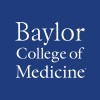
Phase II Study of ONTAK in Previously Treated Patients With Low-grade Non-Hodgkin's Lymphoma (NHL)...
Non-Hodgkin's LymphomaLymphoma3 moreThe purpose of this study is to look at the safety and effectiveness of ONTAK in previously treated patients with NHL.

Photodynamic Therapy in Treating Patients With Lymphoma or Chronic Lymphocytic Leukemia
LeukemiaLymphomaRATIONALE: Photodynamic therapy uses light and drugs that make cancer cells more sensitive to light to kill cancer cells. Photosensitizing drugs such as aminolevulinic acid are absorbed by cancer cells and, when exposed to light, become active and kill the cancer cells. PURPOSE: Randomized phase II trial to study the effectiveness of photodynamic therapy using aminolevulinic acid in treating patients who have cutaneous T-cell lymphoma, B-cell lymphoma, or early chronic lymphocytic leukemia involving the skin.

Phase II Gallium Nitrate in Relapsed or Refractory Non-Hodgkin's Lymphoma
Non-Hodgkin's LymphomaRelapsed Lymphoma3 moreEligible patients will have low- or intermediate-grade Non-Hodgkin's Lymphoma (NHL) that has progressed after standard chemotherapy. Patients will receive gallium nitrate 300 mg/m2/day by continuous IV infusion for 7 consecutive days using a portable infusion pump. Hospitalization is not required. Stable or responding patients will receive additional gallium nitrate infusions every 3 weeks until the time of disease progression, for a maximum total of 8 infusions, or 2 cycles after complete remission has been documented.

Rituximab and Cladribine in Treating Patients With Newly Diagnosed Non-Hodgkin's Lymphoma
LymphomaRATIONALE: Monoclonal antibodies such as rituximab can locate cancer cells and either kill them or deliver cancer-killing substances to them without harming normal cells. Drugs used in chemotherapy such as cladribine work in different ways to stop cancer cells from dividing so they stop growing or die. Combining rituximab with cladribine may kill more cancer cells. PURPOSE: This phase II trial is studying how well giving rituximab together with cladribine works in treating patients with newly-diagnosed mantle cell lymphoma.

NMA Allogeneic Hematopoietic Cell Transplant in Hematologic Cancer/Disorders
Chronic Myeloproliferative DisordersLeukemia6 moreRATIONALE: Giving low doses of chemotherapy before a donor peripheral blood stem cell transplant helps stop the growth of cancer cells. It also stops the patient's immune system from rejecting the donor's stem cells. The donated stem cells may replace the patient's immune system and help destroy any remaining cancer cells (graft-versus-tumor effect). Giving an infusion of the donor's T cells (donor lymphocyte infusion) after the transplant may help increase this effect. Sometimes the transplanted cells from a donor can also make an immune response against the body's normal cells. Giving immunosuppressive therapy before or after the transplant may stop this from happening. PURPOSE: This phase II trial is studying how well chemotherapy followed by donor peripheral stem cell transplant works in treating patients with hematologic cancer or aplastic anemia.

Epstein Barr Virus (EBV) Specific Cytotoxic T-Cells, Relapsed Lymphoma, ANGEL
Epstein-Barr Virus-Related Hodgkin LymphomaEpstein-Barr Virus-Related Non-Hodgkin Lymphoma1 morePatients have a type of lymph gland cancer called Hodgkin or non-Hodgkin Lymphoma which has come back or not gone away after treatment, including the best treatment known for relapsed Lymphoma. Patients are being asked to volunteer to be in a research study using Epstein Barr virus specific cytotoxic T lymphocytes, a new experimental therapy. This therapy has never been used in patients with Hodgkin disease or this type of non-Hodgkin Lymphoma but it has been used successfully in children with other types of blood cancer caused by EBV after bone marrow transplantation. Some patients with Hodgkin or non-Hodgkin Lymphoma show evidence of infection with the virus that causes infectious mononucleosis Epstein Barr virus before or at the time of their diagnosis of the Lymphoma. EBV is often found in the cancer cells suggesting that it may play a role in causing Lymphoma. The cancer cells infected by EBV are very clever because they are able to hide from the body's immune system and escape destruction. Investigators want to see if it's possible to grow special white blood cells, called T cells, that have been trained to kill EBV infected cells. Purpose The purpose of this study is to find the largest safe dose of EBV specific cytotoxic T cells, to learn what the side effects are and to see whether this therapy might help patients with Hodgkin disease and non-Hodgkin Lymphoma.

Interleukin-2 and Stem Cell Factor in Treating Patients With AIDS or AIDS-Related Cancer
LymphomaRATIONALE: Interleukin-2 may stimulate a person's white blood cells to kill cancer cells. Stem cell factor may increase the number of immune cells found in bone marrow or peripheral blood and may help a person's immune system recover from the side effects of cancer therapy. PURPOSE: Phase I trial to study the effectiveness of combining interleukin-2 with stem cell factor in treating patients who have AIDS or AIDS-related cancer.

Iodine I 131 Tositumomab and Fludarabine Phosphate in Treating Older Patients Who Are Undergoing...
Extranodal Marginal Zone B-cell Lymphoma of Mucosa-associated Lymphoid TissueNodal Marginal Zone B-cell Lymphoma13 moreThis phase I trial studies the side effects and best dose of fludarabine (fludarabine phosphate) when given together with iodine I 131 tositumomab in treating older patients who are undergoing an autologous or syngeneic stem cell transplant for relapsed or refractory B-cell non-Hodgkin's lymphoma (NHL). Radiolabeled monoclonal antibodies, such as iodine I 131 tositumomab, can find cancer cells and carry cancer-killing substances to them without harming normal cells. Drugs used in chemotherapy, such as fludarabine, work in different ways to stop the growth of cancer cells, either by killing the cells or by stopping them from dividing. A peripheral stem cell transplant may be able to replace blood-forming cells that were destroyed by chemotherapy and radiation therapy. Giving iodine I 131 tositumomab together with fludarabine followed by autologous stem cell transplant may be an effective treatment for NHL

A Single Agent Phase II Study of Romidepsin (Depsipeptide, FK228) in the Treatment of Cutaneous...
Cutaneous T-cell LymphomaGPI-04-0001 was a Phase II, non-randomized, open label, single arm study that was conducted at approximately 30 sites, primarily in the United States, Europe and Russia. It assessed the efficacy, safety, and tolerability of romidepsin as a treatment for cutaneous T-cell lymphoma (CTCL). Study patients (pts) received romidepsin in a dose of 14 mg/m^2 intravenously over 4 hours on Days 1, 8 and 15 of each 28-day cycle. The duration of study treatment was 6 cycles although pts who showed an objective response or stable disease could continue to receive therapy, at the discretion of the investigator, until disease progression or another withdrawal criterion was met.

Alemtuzumab and Combination Chemotherapy Followed By Donor Lymphocytes in Treating Patients Who...
Chronic Myeloproliferative DisordersLeukemia3 moreRATIONALE: Giving low doses of chemotherapy before a donor peripheral blood stem cell transplant helps stop the growth of cancer cells. It also stops the patient's immune system from rejecting the donor's stem cells. The donated stem cells may replace the patient's immune system and help destroy any remaining cancer cells (graft-versus-tumor effect). Giving an infusion of the donor's T cells that have been treated in the laboratory after the transplant may help increase this effect. Sometimes the transplanted cells from a donor can also make an immune response against the body's normal cells. Giving tacrolimus before and after transplant may stop this from happening. PURPOSE: This phase I trial is studying the side effects and best dose of donor lymphocytes when given after alemtuzumab and combination chemotherapy in treating patients who are undergoing donor stem cell transplant for hematologic cancer.
